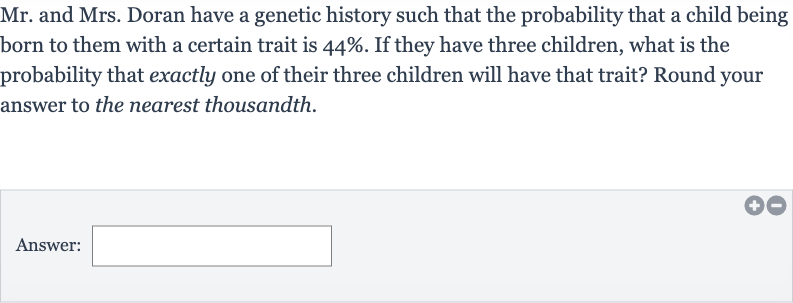AI tutor
Welcome to Bytelearn!
Let’s check out your problem:

Mr. and Mrs. Doran have a genetic history such that the probability that a child being born to them with a certain trait is . If they have three children, what is the probability that exactly one of their three children will have that trait? Round your answer to the nearest thousandth.Answer:
Full solution
Q. Mr. and Mrs. Doran have a genetic history such that the probability that a child being born to them with a certain trait is . If they have three children, what is the probability that exactly one of their three children will have that trait? Round your answer to the nearest thousandth.Answer:
- Use binomial probability formula: Use the binomial probability formula: Identify the values of , , and . (the number of children) (exactly one child with the trait) (the probability of a child having the trait)
- Identify values: Substitute the values into the binomial probability formula.
- Substitute values: Calculate the binomial coefficient .
Since the binomial coefficient must be an integer, we know there's a math error here. The correct calculation is:
which is incorrect because we should not have a decimal. The correct calculation is:
More problems from Find probabilities using the binomial distribution
QuestionGet tutor help
QuestionGet tutor help
QuestionGet tutor help
QuestionGet tutor help
QuestionGet tutor help
QuestionGet tutor help
QuestionGet tutor help
QuestionGet tutor help
QuestionGet tutor help
QuestionGet tutor help
